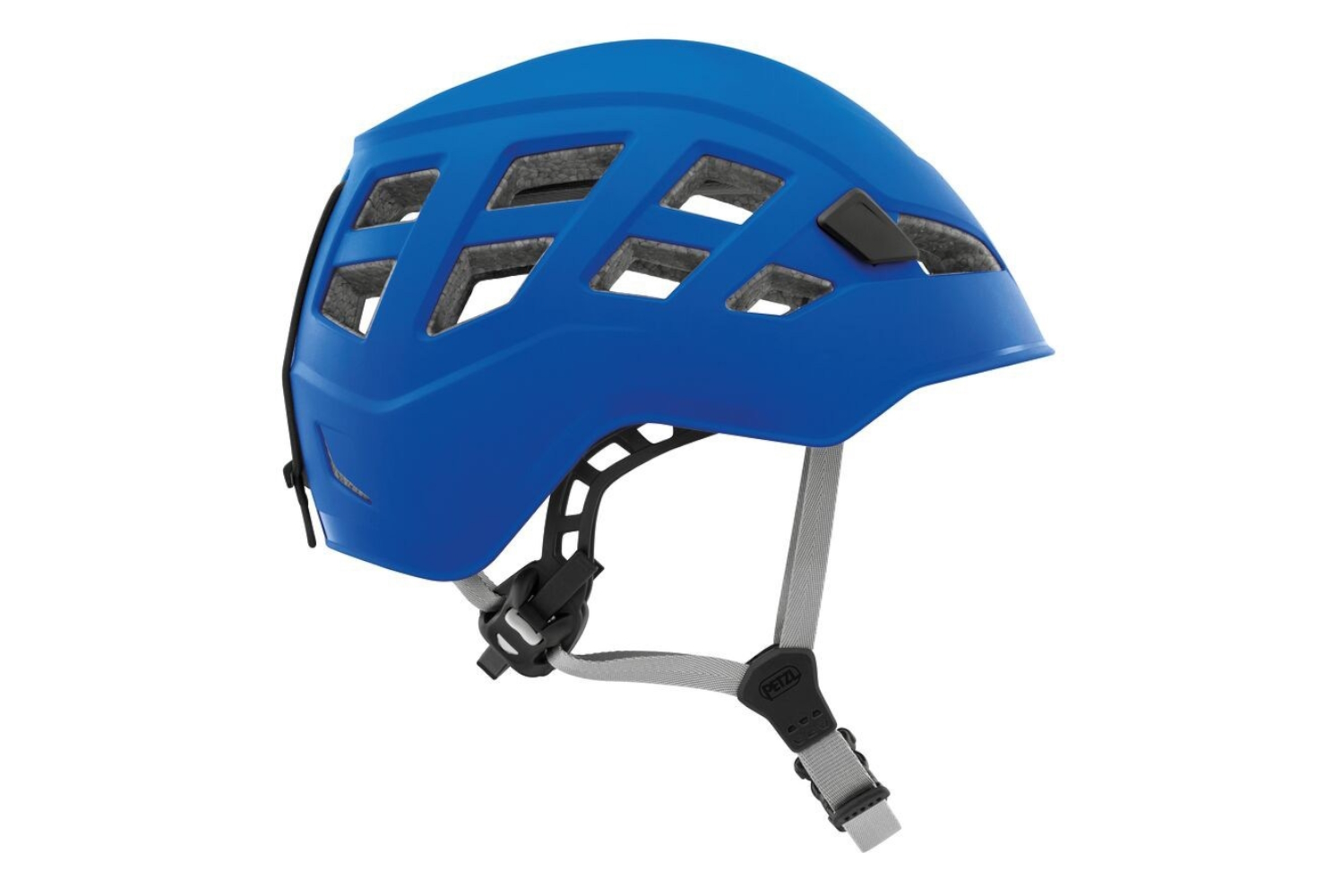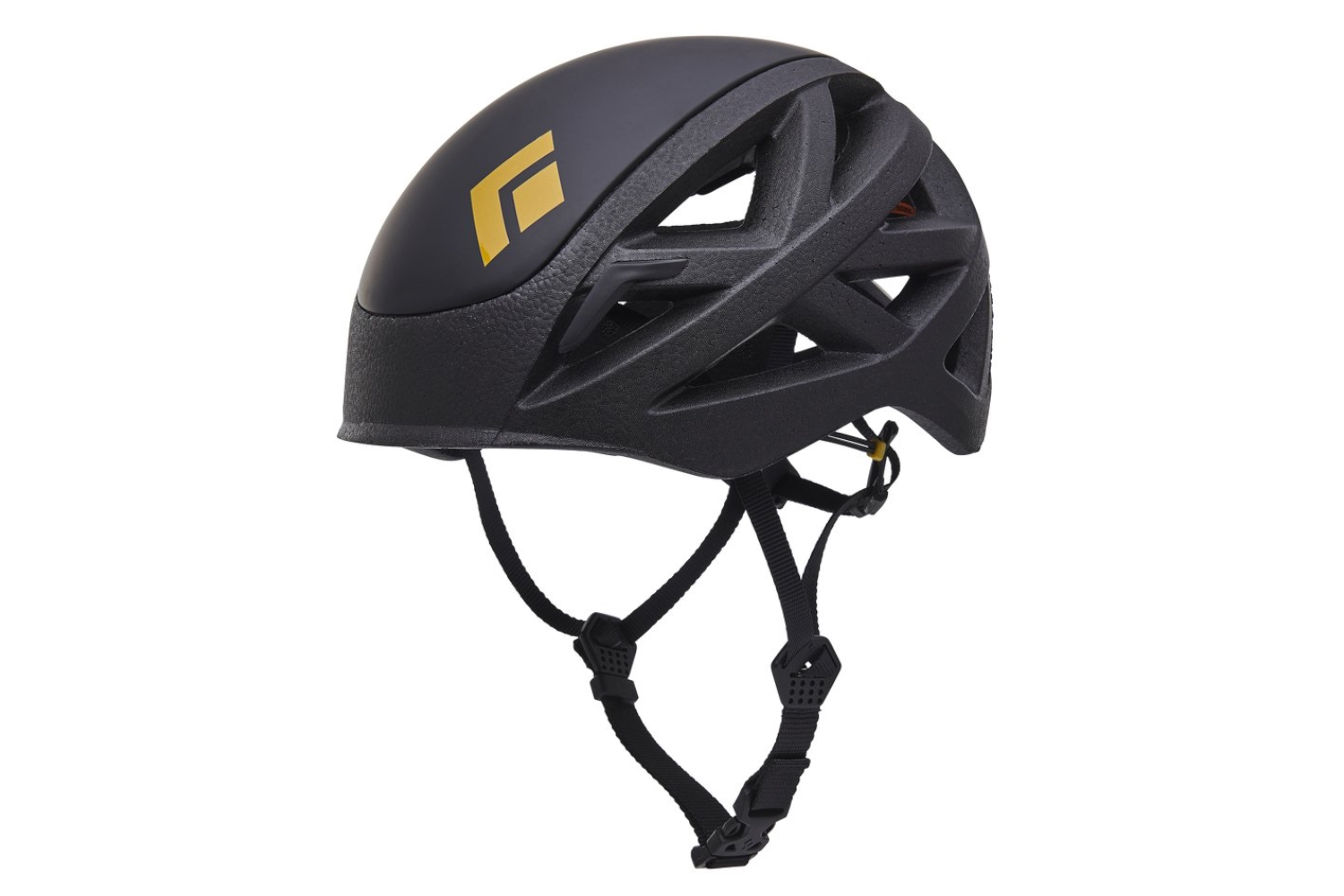Outdoor climbing comes with inherent hazards, and wearing a helmet can help you protect yourself and decrease risk. Modern helmets are designed to defend against rockfall from above, and side impacts that can occur during lead falls. Thanks to innovations in materials and design, climbing helmets are constantly improving.
Climbing helmets have evolved from their humble, clunky beginnings. Now, some designs are truly comfortable, and we hardly notice that we’re wearing them. Excuses not to wear a helmet are scarce these days, and every climber seems to have a close-call anecdote about a friend or acquaintance who has been saved by a helmet.
This list is the result of years spent testing helmets made by various leaders in the market. Fortunately, we haven’t had to test the ultimate purpose of any of these helmets, but we’ve thoroughly assessed day-to-day comfort and durability. We’ve even taken a few small pieces of choss to our well-protected noggins.
Our testers include climbers of all disciplines and a few Search and Rescue veterans who’ve seen what helmets can and can’t do to protect you from falling rock. Our 11 recommendations include quality models that offer comfort, durability, value, and low weight — all without compromising safety and effectiveness.
During field testing, certain styles stood out from the rest, leaving us with this list of the best climbing helmets available today, and each season we search for the most up-to-date models to test for this guide Be sure to check out our included comprehensive buyer’s guide to determine which climbing helmet is right for you. Hop down to our handy comparison chart for a quick glance at each model, or have your burning questions hashed out in our FAQ.
Editor’s Note: We update our climbing helmet guide on May 17, 2024, extolling the super comfortable Black Diamond Vapor as our favorite ultralight helmet.
The Best Climbing Helmets of 2024
Petzl Sirocco
- Weight: 5.6 oz. (S/M)
- Foam: EPP with an EPS puck in the crown
- Best for: Sport climbing, alpine climbing, all-around use
- Key features: Exposed EPP foam with EPS insert in the crown
Pros
- Lightweight
- High-quality construction and materials
- Buckles can be operated with gloves on
Cons
- Some users report a slightly narrow fit
Petzl Boreo
- Weight: 10.6 oz. (S/M)
- Foam: EPP with an EPS puck in the crown
- Best for: Single pitch sport and trad climbing
- Key features: Combination of EPS and EPP foam, heavy duty outer shell
Pros
- Affordable
- Durable
Cons
- Heavy
- Headlamp attachment system is not the most secure and cannot support ski goggles
Black Diamond Vapor
- Weight: 5.5 oz. (S/M)
- Foam: EPP with EPS puck in the crown
- Best for: General use and alpine climbing
- Key features: Plentiful vents, well-fitting harness
Pros
- Very light
- Comfortable
- Well Vented
- Great headlamp clipping system
Cons
- Expensive
- Very fragile
Petzl Borea
- Weight: 10.4 oz
- Foam: EPP/EPS
- Best for: All climbing disciplines
- Key features: Ponytail compatible, hard outer shell
Pros
- Fits comfortable with a ponytail
- Good value
- Durable
Cons
- Only available in one size
Petzl Picchu
- Weight: 11.6 oz. (one size)
- Foam: EPS
- Best for: Kids, all-around use
- Key features: ABS hard shell
Pros
- Durable
- Protects against frontal, lateral, and rear impacts
- Also certified as a cycling helmet
Cons
- Minimal ventilation
Salewa Piuma 3.0
- Weight: 6.2 oz. (M/L)
- Foam: EPP with a polycarbonate shell
- Best for: All-around use
- Key features: 14 vents, highly adjustable harness
Pros
- Lightweight
- Well ventilated
- Good value
Cons
- Not super low profile
Edelrid Salathe
- Weight: 7 oz. (S/M)
- Foam: EPP with an EPS puck in the crown
- Best for: Sport climbing, alpine climbing, all-around use
- Key features: Exposed EPP foam with EPS insert in the crown
Pros
- Lightweight
- Comfortable harness and suspension system
- High-quality construction and materials
Cons
- Small adjustment range; sizing can be tricky
- Weight: 9.2 oz. (One size)
- Foam: EPS with a reinforced crown
- Best for: All-around use
- Key features: Reinforced crown
Pros
- Durable
- Nice-looking
- Well-ventilated
Cons
- A touch heavy
- Weight: 7.8 oz. (S/M)
- Foam: EPP with an EPS puck in the crown
- Best for: Sport climbing, alpine climbing, all-around use
- Key features: Unique headlamp attachment points, MIPS (optional)
Pros
- High-quality construction and materials
- Low weight
- Low-profile headlamp attachment
Cons
- Minimal ventilation in the front end
- Weight: 7.9 oz. (S/M)
- Foam: EPS
- Best for: Sport climbing, alpine climbing, all-around use
- Key features: Plentiful vents and magnetic buckle
Pros
- Good value
- Super breathable
Cons
- EPS foam construction isn't the most durable
- Slightly heavier than its competition
- Weight: 7 oz. (S/M)
- Foam: EPS
- Best for: Sport climbing, alpine climbing, all-around use
- Key features: EPP foam with EPS insert in the crown
Pros
- Lightweight
- Easy-to-use adjustment dial
Cons
- EPS foam construction isn't the most durable
- Y-straps are difficult to adjust around the ears
Climbing Helmets Comparison Chart
| Climbing Helmet | Price | Weight | Foam | Key Features |
| Petzl Sirocco | $115 | 5.6 oz. (S/M) | EPP with an EPS puck in the crown | Exposed EPP foam with EPS insert in the crown |
| Petzl Boreo | $65 | 10.6 oz. (S/M) | EPP with an EPS puck in the crown | Combination of EPS and EPP foam, heavy-duty outer shell |
| Black Diamond Vapor | $150 | 5.5 oz. (S/M) | EPP with an EPS puck in the crown | Plentiful vents, hard shell outer crown |
| Petzl Borea | $65 | 10.5 oz. (one size) | EPP with an EPS puck in the crown | Ponytail compatible, hard outer shell |
| Petzl Picchu | $60 | 11.6 oz. (One size) | EPS | ABS hard shell |
| Edelrid Salathe | $120 | 7 oz. (S/M) | EPP with an EPS puck in the crown | Exposed EPP foam with EPS insert in the crown, lightweight harness |
| Salewa Piuma 3.0 | $120 | 6.2 oz (M/L) | EPP with an EPS puck in the crown | 14 vents, highly adjustable harness |
| Wild Country Syncro | $160 | 9.2 oz. (One size) | EPS with reinforced crown | Reinforced crown |
| Black Diamond Vision | $100 | 7.8 oz. (S/M) | EPP with an EPS puck in the crown | Unique headlamp attachment points, MIPS (optional) |
| Trango Halo | $100 | 7.9 oz. (S/M) | EPS | Lots of vents |
| Mammut Crag Sender | $90 | 7 oz. (S/M) | EPS | Combination of EPS and EPP foam, heavy-duty outer shell |
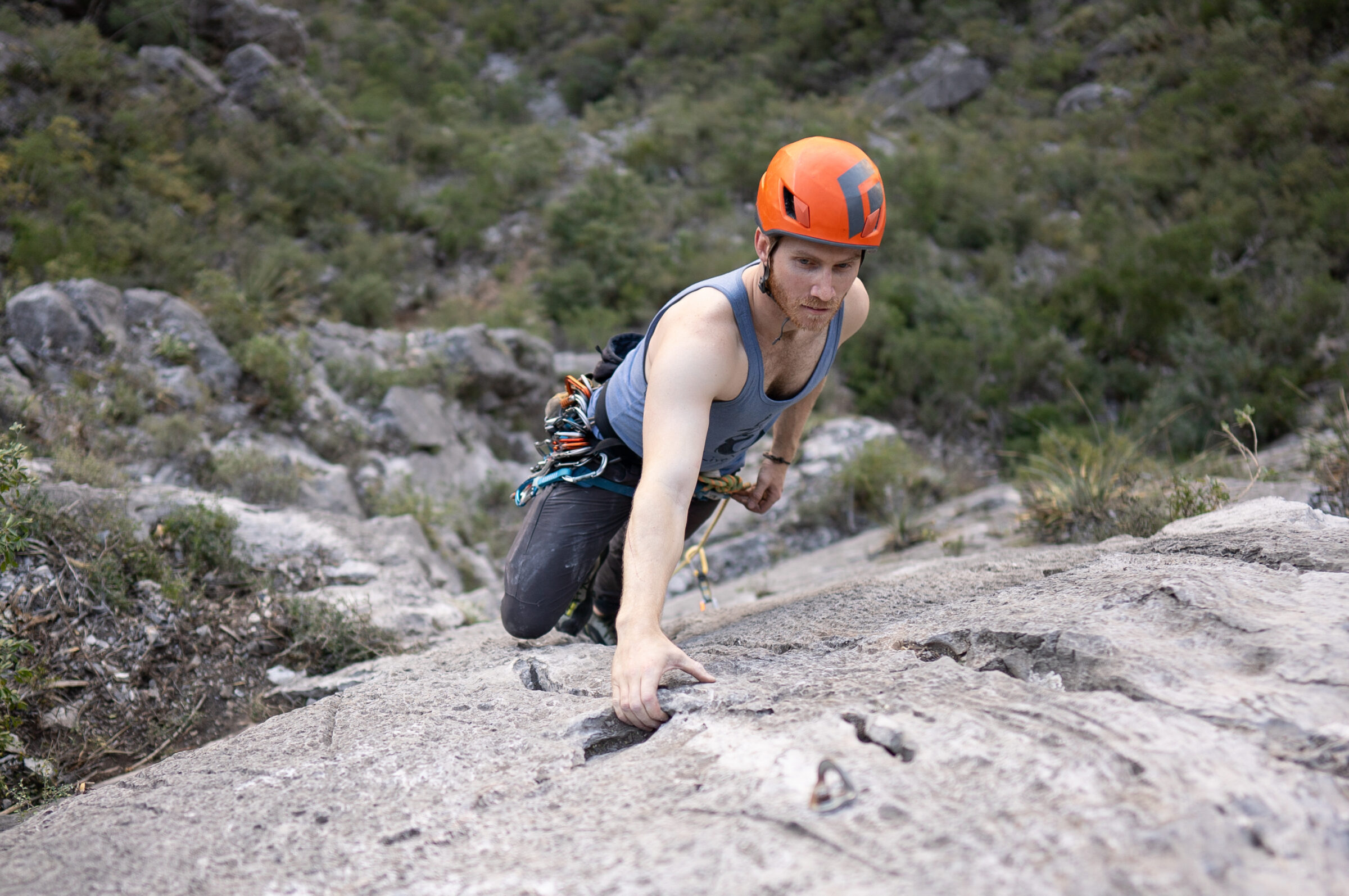
How We Tested Climbing Helmets
To narrow down this list of the best climbing helmets, the GearJunkie team tested dozens of models and systematically recorded our impressions.
We tested helmets while sport climbing, trad climbing, multi-pitch climbing, and aid climbing. We wore helmets while belaying, and even took a few pieces of choss to our foam-covered domes. With every model, we assessed comfort, weight, durability, breathability, and overall value.
Much of the testing took place at the crags near Salt Lake City, Utah — from the sharp limestone of Saint George to the soaring sandstone of Zion National Park. We also wore helmets in the sweltering summer heat of central Texas to compare ventilation systems and temperature regulation.
We did not physically test the protective abilities of the helmets on this list. Still, we made sure to only include helmets with industry-leading materials and safety-focused designs.
While running around the crag swapping helmets and comparing notes, we’re also testing other climbing gear. Check out our comprehensive guide to the best climbing shoes and our line-up of the best climbing harnesses.
Why You Should Trust Us
Our crew of climber gear testers includes Seiji Ishii, Austin Beck-Doss, Christian Black, and Matt Bento, plus the input of their very opinionated gearhead buddies. Ishii is no stranger to the objective hazards of the big mountains after multiple Alaskan mountaineering missions. Black and Bento are former YOSAR members who’ve seen the all-too-gruesome consequences of folks not wearing a helmet. Beck-Doss is a well-rounded climber who enjoys El Cap’s big walls and bullet-hard Wyoming limestone.
Between the four of them, they bring decades of experience from all disciplines of climbing. These climbers have been in the game long enough to know that helmet technology has come a long way and are happy to see the slow but steady acceptance of helmets in climbing culture.
Buyer’s Guide: How to Choose the Best Climbing Helmets
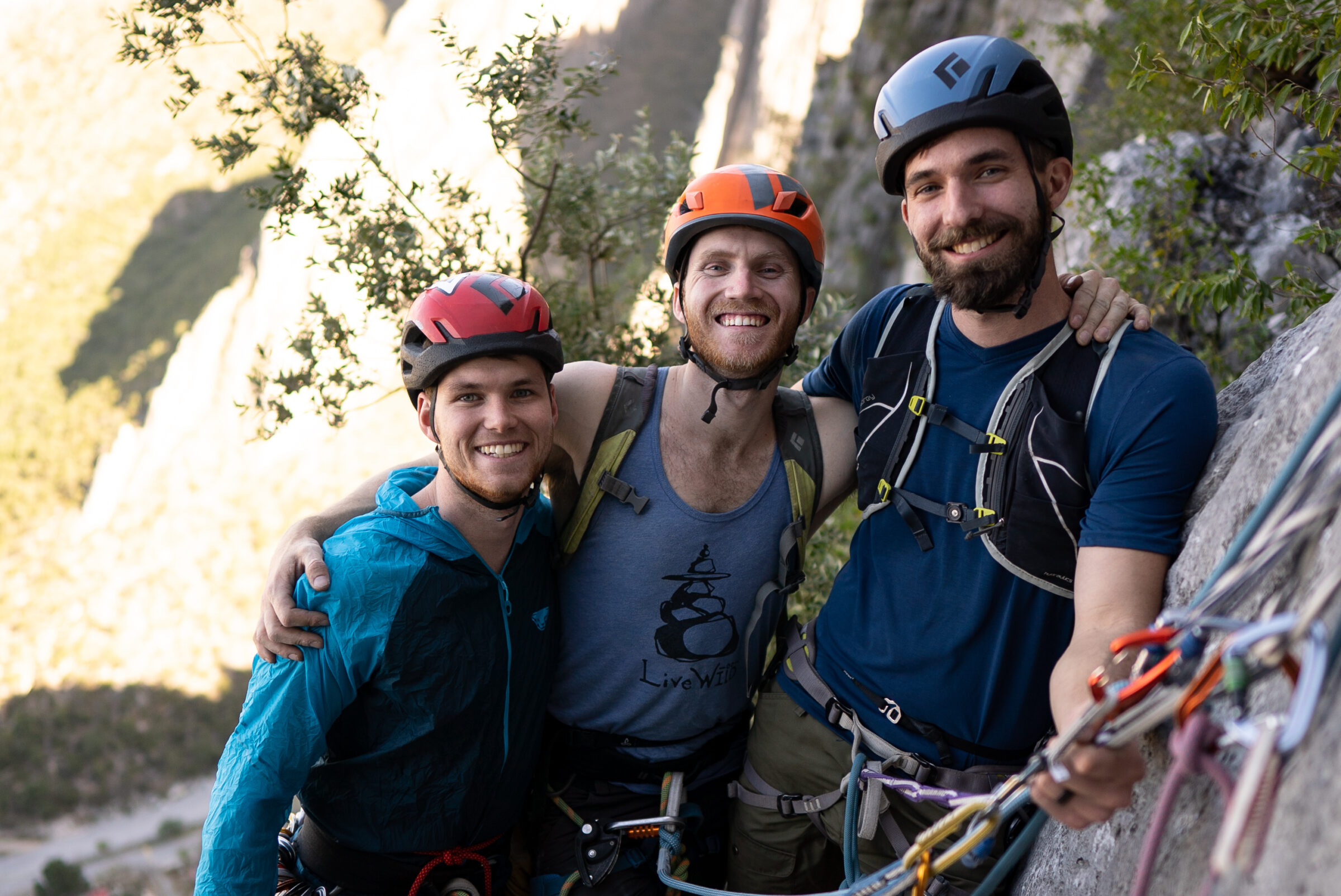
When climbing outdoors, certain risk factors remain beyond our control. Wearing a climbing helmet at the crag is one of the easiest and most effective ways to protect and prepare yourself against injury.
In 2024, high-quality climbing helmets are more protective, comfortable, and lightweight than ever before. All outdoor climbers should have a helmet in their kit — and preferably, on their heads.
When selecting the perfect helmet, there are a variety of important factors to consider. In this handy buyer’s guide, we’ll break down important considerations including materials, comfort, ventilation, sizing, weight, durability, and much more. We’ll also thoroughly explain some key terminology you’ll need to know when making an informed purchase.
Parts of a Helmet
Modern climbing helmets consist of a dome-shaped piece of foam, a hard plastic shell (usually), a harness system for comfort and precise fitting, and a chin strap. The materials used for each component will determine the best uses and ultimate cost of the helmet.
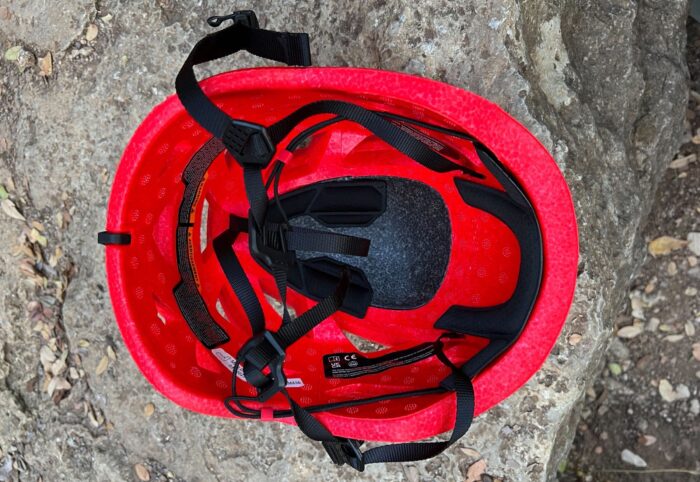
Helmet Foam
The shock-absorbing qualities of modern helmets come from lightweight shock-absorbing foam. There are two different types of foam on the market, and each has its own pros and cons.
All of the helmets we’ve included on this list have foam that covers the top, rear, and sides of the head, which is essential for protecting against various types of potential impacts.
Expanded Polystyrene (EPS)
Because expanded polystyrene foam is both effective and affordable, it’s been used in climbing helmets for many decades. Though EPS feels hard to the touch, it’s made to crush and crack upon impact in order to absorb the brunt of collision forces.
While EPS is still found in many quality helmets, it does have some downsides. Some climbers find EPS to be fragile, especially when used in lightweight and low-profile helmets.
It’s important to be careful with EPS helmets. Simply dropping one on the ground by accident could result in small cracks. Once cracks have formed, the helmet must be replaced.
Expanded Polypropylene (EPP)
The other foam option on the climbing helmet market is called expanded polypropylene, or EPP. Unlike EPS, EPP does not absorb impacts by fracturing. Instead, EPP helmets have a little give to them and can actually regain their original shape after minor impacts.
EPP helmets are also less likely to be accidentally damaged, and they often last longer as a result. As the gold standard for durability, EPP is quickly becoming the foam of choice in the climbing helmet market. As a tradeoff for the maximum durability and minimum weight, EPP helmets do tend to be more expensive.
Composite Foam Helmets
Some modern helmets incorporate both EPS and EPP foam in their construction in order to maximize the protective benefits of each. On our list, the Black Diamond Vision and the Petzl Sirocco are examples of composite foam helmets.
Because EPS foam is great for absorbing the brunt of top impacts from falling objects, composite helmets usually include an inserted disc of EPS in the crown area. Aside from this EPS disc, composite helmets like the Vision and the Sirocco are made from the more flexible and durable EPP foam.
Helmet Shells
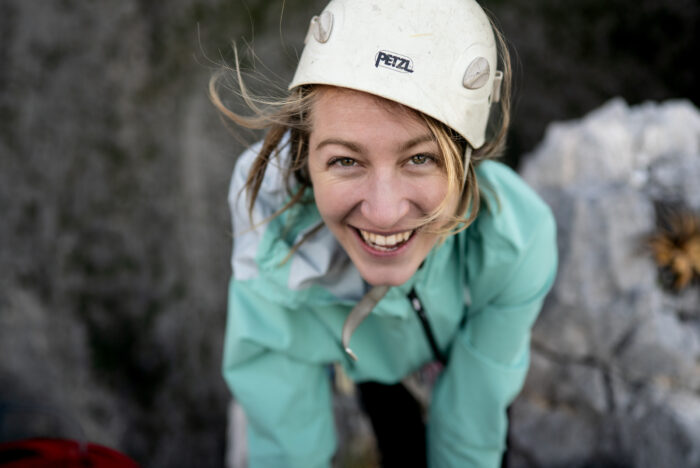
Some climbing helmets come with a hard plastic outer layer or shell. Most shells are made from either ABS or polycarbonate. The Wild Country Syncro comes with a full-coverage polycarbonate shell.
Because EPP foam is durable and resistant to fractures on its own, some EPP helmets do not come with a full outer shell. Helmets without full shells are lighter, but they also tend to be less durable.
Some styles, like the Edelrid Salathe, come with partial shells that only cover the crown area of the helmet in order to disperse potential impacts from falling objects.
Adjustable Harness System
The harness system inside a climbing helmet allows the wearer to adjust the fit for comfort and security. Though the various helmets on our list come with different harness systems, each is well-made and easy enough to adjust on the fly.
Some helmets, like the Singing Rock Hex, include a harness system that adjusts via a large dial and can fit a broad range of head sizes and shapes. While this is a handy feature, it adds significant weight.
Minimalist helmets like the Edelrid Salathe include a much more streamlined harness system in order to minimize total weight. The downside to this is that minimalist helmets are less adjustable overall.
We recommend that all climbers try helmets on in advance — or at least measure your head’s dimensions — before making a purchase, especially with minimalist styles.
For winter climbing, it’s nice to have the option to wear a hat underneath your helmet, so plenty of adjustability is key.
Padding
In addition to a harness system, most climbing helmets are lined with removable, washable padding. In the case of most modern helmets, only a few small strategically placed pads are required to create a secure and comfortable fit.
Helmet Chin Straps and Buckles
All climbing helmets are secured onto the head using straps that fit around the ears and under the chin. A lightweight and adjustable buckle connects the straps and offers custom fitting.
While classic side-release plastic buckles are tried and true, they can be difficult to release while wearing gloves. Ice climbers and mountaineers may want a harness with a magnetic buckle, such as the Petzl Sirocco.
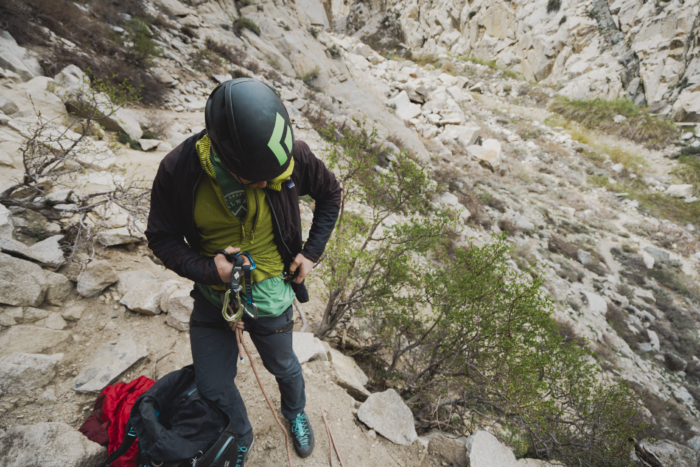
Comfort
Climbing helmets are often worn for multiple hours on end, and comfort is paramount. Because no two climbers will have an identical head shape, the most comfortable style for you might not work for your partner. For this reason, we always recommend trying on multiple styles as you search for the right model.
Aside from the overall shape, a helmet’s harness system will have the greatest impact on its comfort. While testing many different climbing helmets, we found minimalist helmets with simple harnesses tend to be the most comfortable — especially for climbers with long hair.
Helmets like the Petzl Sirocco and Edelrid Salathe utilize simple adjustable straps instead of bulky adjustment dials or plastic bands. Unfortunately, minimalist helmets are also the least adjustable.
Well-placed interior liner pads can also add significant comfort. Pads combine with the harness system to hug the shape of your head, and most are removable and washable. On this list, we particularly like the padding system found on the Mammut Crag Sender and the Edelrid Salathe.
Durability
Climbing helmets with robust plastic shells — such as the Petzl Boreo — tend to be more durable than helmets with lots of exposed foam like the Petzl Sirocco. Many climbers simply toss their helmets into their packs with their rack and rope, and the resulting turbulence can cause damage over time.
However, if you treat a climbing helmet with care, it should last for many years — unless it endures a significant impact, of course. Comfort and weight almost always compromise durability, and ultralight models like the Black Diamond Vapor require some extra care when stowing and storing to keep them from being rendered ineffective.
As far as foam durability goes, expanded polypropylene (EPP) is superior to expanded polystyrene (EPS). EPP has a little give to it, and it can flex and survive minor impacts without breaking or deforming. EPS, on the other hand, fractures easily and must be replaced as soon as any cracks form. If you are rocking an ultralight helmet, be sure to visually inspect it for cracks every time you head out to climb.
On our list, the Petzl Boreo is among the most durable helmets you can buy. Naturally, it’s also one of the heavier options.
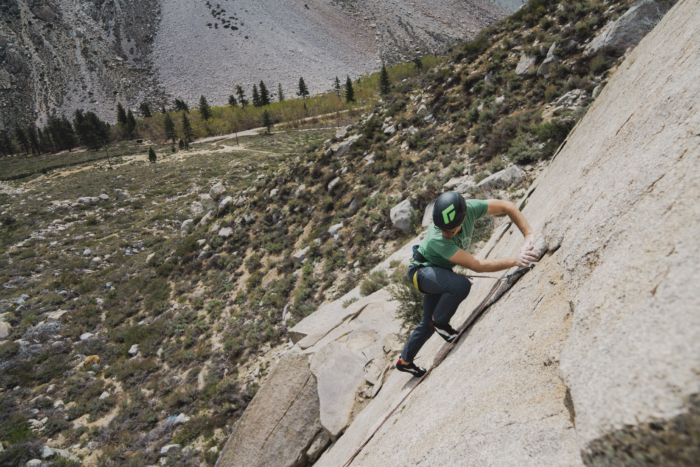
Weight
On long approaches or alpine missions, an ultralight helmet can improve comfort and lighten your load. On this list, we have included helmets weighing from 5 to 12 ounces.
Our top pick, the Petzl Sirocco, weighs a scant 5.6 ounces, and the Black Diamond Vapor is even lighter. Lightweight helmets are also generally more comfortable than their more durable, heavier counterparts.
While the difference of just a few ounces may seem insignificant, we’ve found that ultralight helmets are much appreciated when you’re 10 pitches up an all-day adventure route.
Generally, ultralight helmets sacrifice some durability to keep their total weight low.
Ventilation
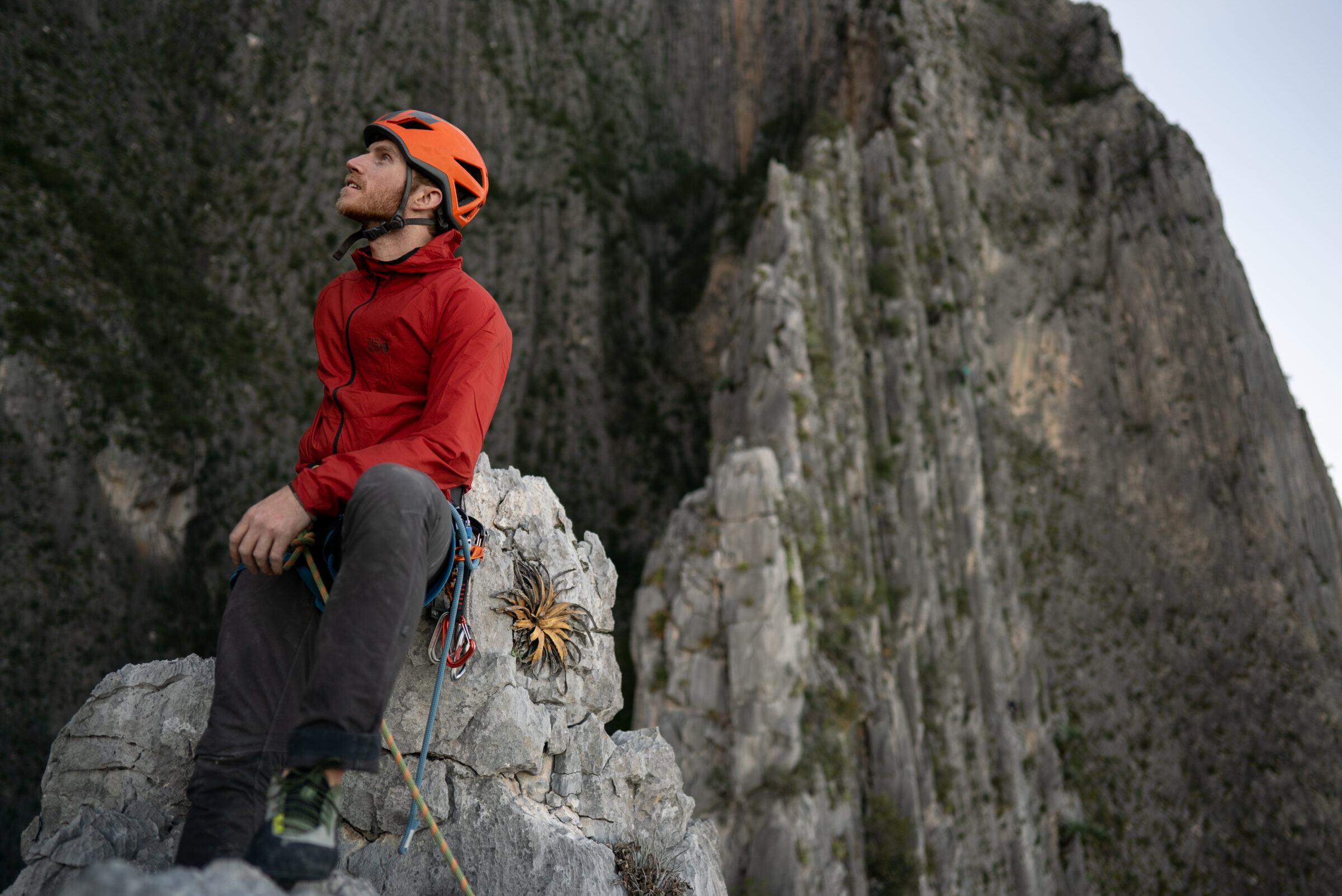
At some point, you’re going to get hot and sweaty while out at the crag. For humans, a well-ventilated head is crucial for thermoregulation.
While lots of vents are great for staying cool, too many vents can decrease the overall effectiveness of the helmet The best climbing helmets have strategically placed vents that breathe well without compromising protection.
On this list, we think the Edelrid Salathe and the Petzl Sirocco helmets offer excellent ventilation systems.
Sizing
Every helmet manufacturer has its own sizing system. Generally, adult helmets come in two or three sizes. Each size will cover a range of head diameters.
For example, a small Edelrid Salathe is designed to work with heads measuring 50-58 cm in diameter. Helmets that include harnesses with plastic bands or dials tend to be more adjustable and work for a wider range of head diameters. We recommend measuring your head — and ideally trying on multiple helmets — before purchasing.
Other Features
Headlamp and Goggle Compatibility
Most climbing helmets come with slots or straps that allow you to wear a headlamp or a pair of ski goggles securely. On our list, helmets including the Mammut Crag Sender, Petzl Sirroco, and Edelrid Salathe offer excellent modular compatibility with headlamps and goggles of all shapes and sizes.
MIPS
Multidirectional Impact Protection Systems, or MIPS, are integrated features designed to mitigate rotational forces on the head and brain. Basically, helmets outfitted with MIPS include a low-friction layer between the helmet’s liner and the wearer’s head.
Upon impacts that occur at an angle, this MIPS layer should allow the helmet to absorb the kind of rotational forces often associated with traumatic brain injuries.
MIPS has been available in cycling and ski helmets for many years, but only recently have some climbing companies adopted the technology. Though some studies have shown MIPS does decrease rational forces from impacts sustained during a fall, not all climbing helmet experts agree MIPS provides an advantage in climbing-specific scenarios.
Generally, a helmet with MIPS will cost $25-40 more than a non-MIPS version.
When to Wear a Climbing Helmet
From high-elevation alpine routes to roadside sport crags, a helmet is always a good idea.
Currently, the practice of wearing a helmet for multi-pitch and trad climbing is widely practiced and nearly universal. Trad climbing and multi-pitch routes are often more likely to involve an elevated risk of rockfall. At prominent trad climbing crags such as Indian Creek and Yosemite, almost all climbers wear helmets.
In other climbing disciplines, helmet use is far less standard. In the relatively controlled environment of the climbing gym, few climbers wear helmets due to a decreased risk of falling rock or out-of-control lead falls. Similarly, many climbers choose not to wear a helmet while bouldering or sport climbing.
Though some climbing disciplines are more helmet-prone than others, climbers, in general, are certainly moving toward more frequent helmet use. As experts in climbing and climbing gear, we feel helmets provide significant protection for any discipline of climbing.
Modern helmets are light, comfortable, and minimally intrusive. We advocate for climbers to wear helmets no matter which discipline they’re participating in.
When to Retire a Climbing Helmet
It’s important to regularly check your helmet for damage and excess wear. Helmets can only provide protection if they’re in proper condition.
The time to retire your helmet and purchase a new one depends on the materials it’s made from. Expanded polystyrene (EPS) helmets fracture upon impact to absorb forces and protect the wearer.
Once an EPS helmet has sustained an impact and has cracked, it must be retired. If you own an EPS helmet (such as the Petzl Picchu), check frequently for cracks and deformations on both the interior and exterior.
Remember that major impacts are not the only events that can cause retirement-worthy cracks. Small fractures may be caused by simply dropping an EPS helmet onto a hard surface.
Expanded Polypropylene (EPP) helmets like the Edelrid Salathe and Petzl Sirocco are semi-flexible and more resistant to cracks. EPP can endure multiple impacts, as long as the overall integrity of the helmet remains in good shape.
If you’ve damaged your EPP helmet and are unsure if it needs to be retired, it’s best to make a conservative choice and purchase a new helmet.
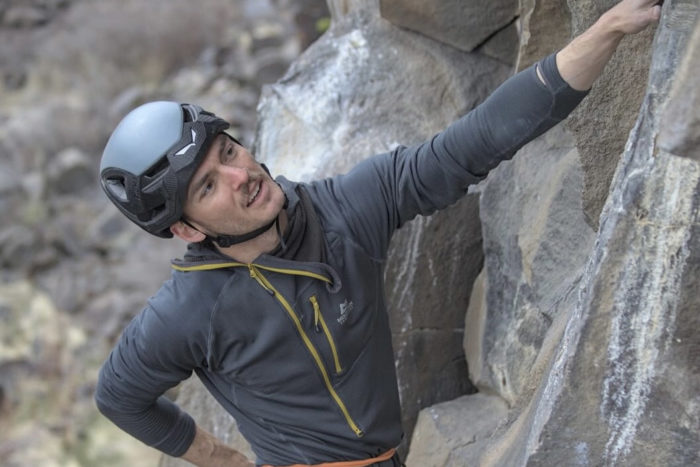
Climbing Helmet Safety Standards
Climbing helmets are designed and tested to meet certain international safety standards. The most common standards for climbing helmets are the UIAA 106 and the EN 12492.
Helmets designed according to these standards must fit into guidelines related to ventilation, chinstrap strength, and impacts from above.
While UIAA and EN standards account for impacts from above (such as rockfall), these standards do not prioritize a helmet’s ability to protect against back and side impacts. To ensure that your helmet offers around-the-head protection, look for companies that mention it in the helmet’s specifications.
Some companies, like Petzl, have their own internal standards for side-of-the-head protection. All of the helmets on our list include foam that covers the back and sides of the wearer’s head.
FAQ
A helmet provides significant protection against some of the hazards climbers commonly encounter at the crag. We strongly recommend the use of helmets, especially for climbing outside.
The best helmet is the one that’s on your head. All of the helmets we’ve included on this list offer top-notch protection. Any of these models will help mitigate safety concerns. Always make sure your helmet is properly fitted and sized.
Yes, climbing helmets provide very real protection against hazards including rockfall and side impacts that can occur during lead falls. To get the most protection out of your helmet, be sure it’s sized and fitted correctly.
Your helmet should stay firmly on your head at all times without slippage. A damaged helmet may not be effective. Be sure to check your helmet regularly for fractures.
A properly sized climbing helmet will fit securely on your head without any gaps or negative spaces. The best way to determine your correct helmet size is to try on multiple options.
If trying on helmets ahead of time is not possible, you can use a tape measure to find the circumference of your head. A second set of hands is helpful, so feel free to recruit a friend’s help.
You’ll want to measure the widest part of your head, which is usually found across the center of the forehead, above the ears, and around the prominent bump at the back of your head. Note the measurement in centimeters, as this is the unit most helmet companies use for sizing.
Once you have your measurement, check the helmet’s sizing chart to determine the best size for you.

The Best Climbing Shoes of 2025
Aside from the ice climbers, mountaineers, and Charles Albert, every climber needs a pair of reliable climbing shoes.

The Best Climbing Harnesses of 2025
We found the best climbing harnesses of 2025. Whether you’re sport climbing or mountaineering, we have you covered.


